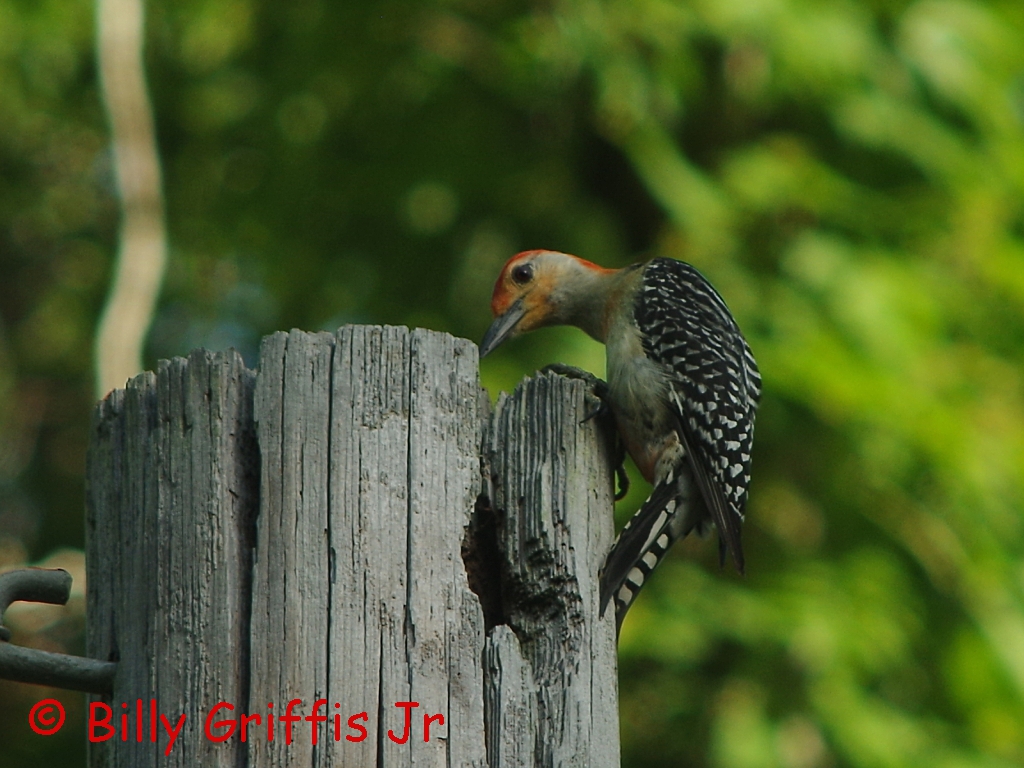 Originally posted by jon404
Originally posted by jon404 
As a total-neophyte bird photographer, why not skip the tripod and monopod and just shoot on TAv at 1/1000 sec and f/11 ... with the ISO left floating to wherever it wants to go? With a K-30 and 55-300mm lens at 300mm, I've found that this works with airplanes in daylight, using the C Continuous Focus switch setting.
I'd bet that -- theoretically -- there is absolutely zero need for a tripod at 1/1500 second or faster. So then image quality becomes a trade-off between the DOF you want, and ISO. On the K-30, ISO 400 is always acceptable ... and 800 quite often, depending on the picture.
What do you bird photographers think? Toss those tripods?
Hi jon404,
There are different levels of results that different people wish to achieve in any genre. Some birders just want a record of the birds they see, and only need enough detail to accurately identify the bird species, approximate age and sexual differences in plumage and record the sighting. I started this way, knowing nothing about birds, and as I learned more about them, the better I got at shooting them. As my hobby developed, my focus evolved to wanting to show the birds as most people never see them -- thus the expensive long fast glass and more demanding shooting techniques. Here are some examples of what I like to shoot, all shot in jpeg, cropped as noted and PP'd to taste then downsized for posting:
Red Bellied Woodpecker, K20 . Tamron SP 300/2.8 + P F 1.7x AFA + Tamron 140F 1.4x Adaptall 2 TC (714mm f6.7)
1/100, f11 (actually f16 -- f6.5 at the lens x 1.7 x 1.4 for the two TCs respectively -- the AFA automatically converts, but none of the 1.4x TCs convert aperture multipliers to the camera -- it's confusing) , ISO 250 Shot from a tripod.
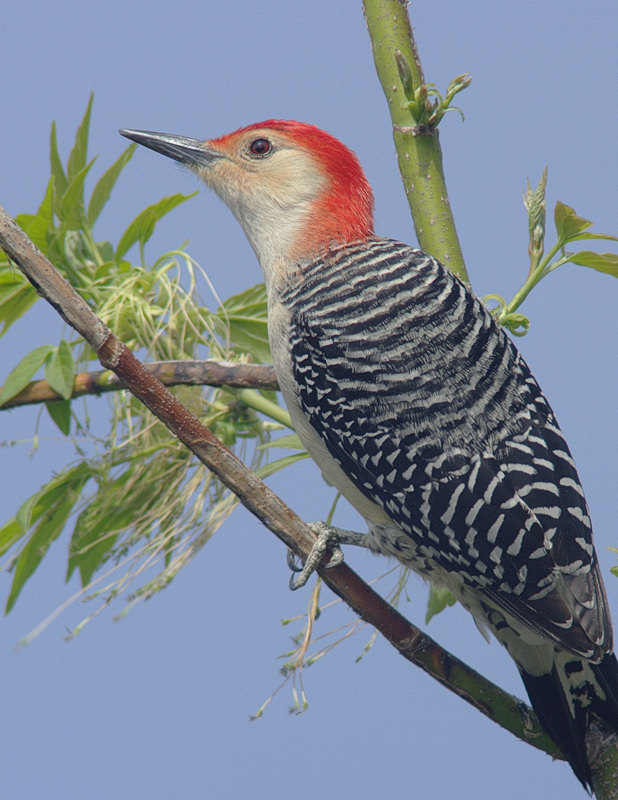
For this one, I chose to risk the slow shutter speed to get added resolution and better CA/PF control by stopping the lens down. Relatively low ISO was used prevent noise from destroying feather detail -- I rarely shot the K20 or K-7 at ISO higher than 800 for this reason. Of course, with a K-5, I could have gone to around ISO 1000 and gotten the shutter speed up to about 1/400 with pretty equivalent IQ, but that wasn't a viable choice with the K20. This was cropped to 5x7 vertical from a landscape oriented shot using the full height of the image.
White Throated Sparrow. Same camera and lens/TCs combo.
1/100, f7.6 at the lens, ISO 320. This is also a vertical crop from a landscape frame, shot from 10 feet or less from a tripod

Again, a very slow shutter speed -- I wanted more DOF -- 300/2.8 lenses have razor thin DOF wide open at close to Minimum Focusing Distance (MFD)
Another White Throated Sparrow (one of my favorite birds to shoot) These are two shots from an 8 shot sequence from one of my first shoots with a new (to me) FA* 300 f2.8 + F 1.7x AFA + Tamron F 1.4x P MC4 AF TC (714mm f6.7) K 20,
1/100, f4.7 at the lens (you can see the DOF is very narrow) ISO 200

On this one, I had stopped the lens down further to f5.8 to get more DOF.
1/100, f5.8 at the lens, ISO 320

Both of these are full height 5x7 vertical crops from landscape frames and shot from a tripod. Getting an 8 shot sequence like this (these were all taken in single shot mode, not burst -- I like to pick my shots, and generally don't use burst mode, even though the camera is always set up for them since I never know when an action sequence will be called for).
Here are a few shots with a K-5, Canon FD 300 f4 L (this is an '80's vintage MF lens permanently converted to K mount) + F 1.7x AFA (which makes it a limited AF lens at 510mm f6.8). These were shot with the lens wide open on a sunny day, but in a shaded area, later in the afternoon. I used ISO 1600 to keep the shutter speeds up, a real luxury that the K-5 series bodies allow. I would usually shoot this combo handheld, but in this instance, I was set up to shoot the hummers, so I used a very lightweight CF travel tripod and ballhead + a Wimberley Sidekick (a side mount gimbal that mounts on a ball head)
The best of the hummer shots -- K-5, 1/400, f4 at the lens,
ISO 1600. This was shot at @ 10 feet and cropped on the left side only to 8x10
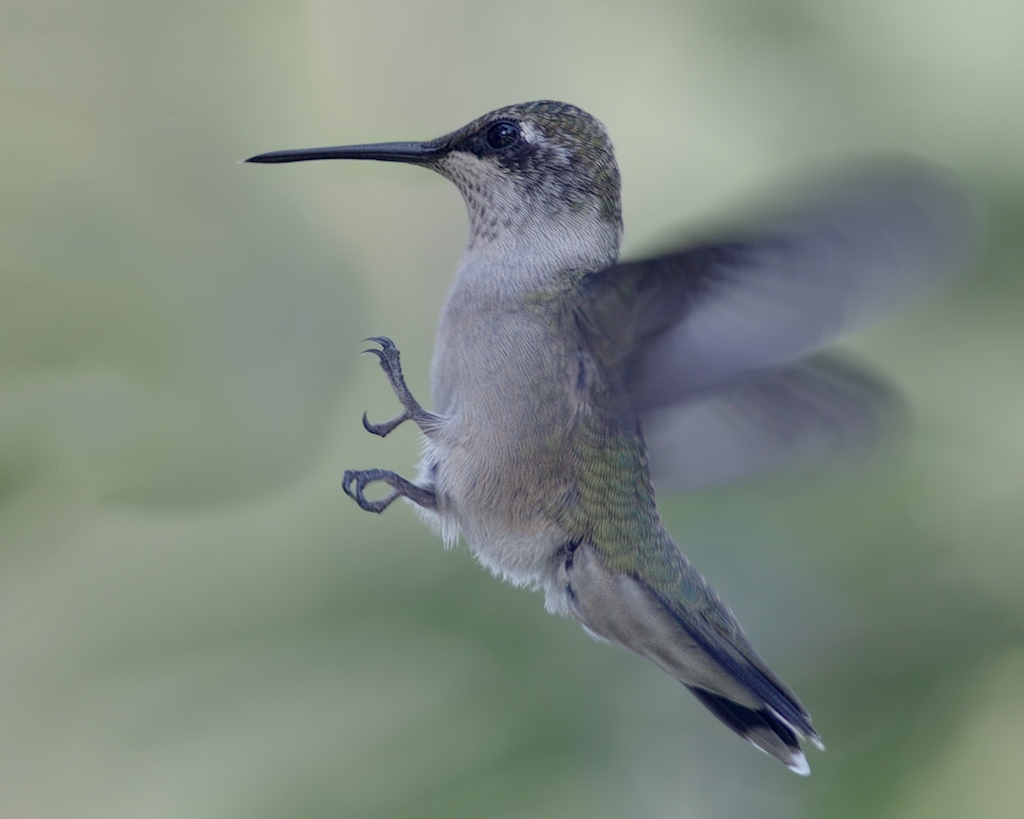
A small flock of young Cedar Waxwings arrived to dine on berries behind the HB feeder I was set up at, and I was able to grab a shot of one of them. K-5, 1/1250, f4 at the lens,
ISO 1600.
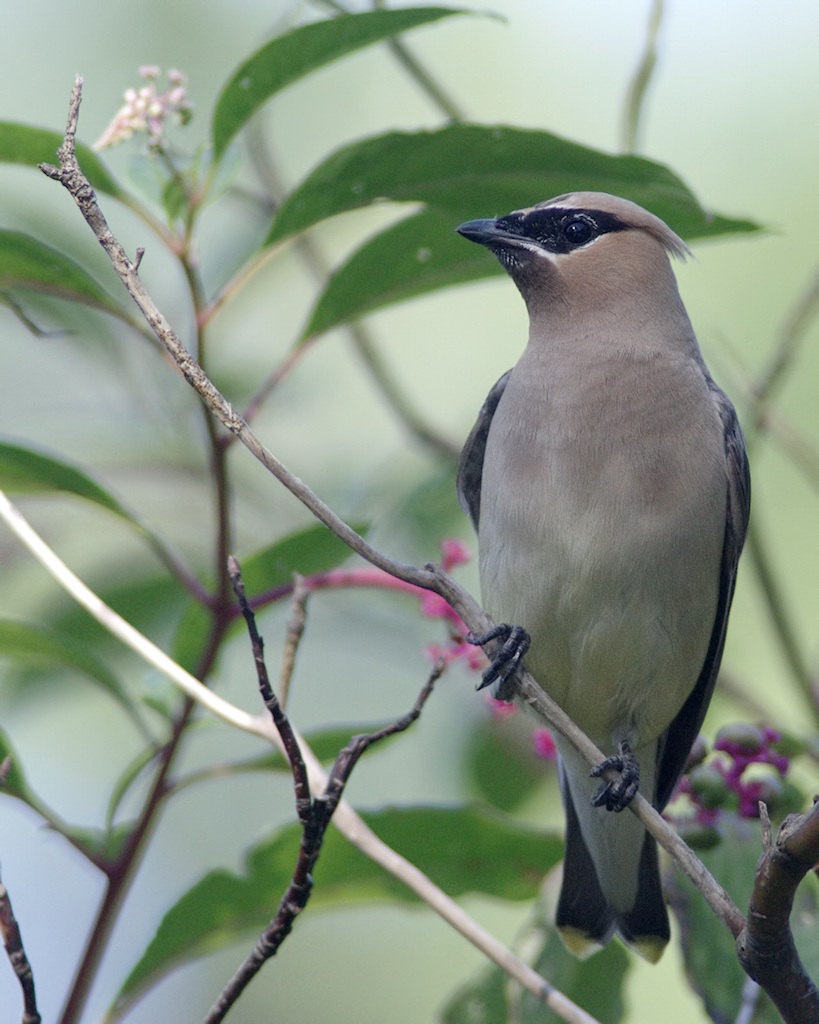
This is probably about the best shot for feather detail that I've been able to get of one of these guys. They usually shoot very smooth since their breast feathers are very finely textured. I would have preferred to shoot this stopped down a bit to get more DOF (the tail is OOF), but I would have sacrificed the ability of the AFA to AF since this lens has to be focused stopped down because it's fully manual, and anything slower than f4.5 at the lens would take me over the f8 that the AF system needs to function reliably. This is a vertical crop from a landscape frame.
I am not arguing that tripod shooting is the only way to go -- I prefer handholding, but the results are not consistently as good. There is a considerable amount of luck involved to find subjects in good enough light to allow for the shutter speeds needed to get a high level of feather detail, and very good technique is usually a necessary ingredient to get quality results. Here are some relatively recent examples that came out well -- larger birds at longer distances:
Great Blue Heron. K-5. FA* 300 f4.5. 1/800, f5.6, ISO 100
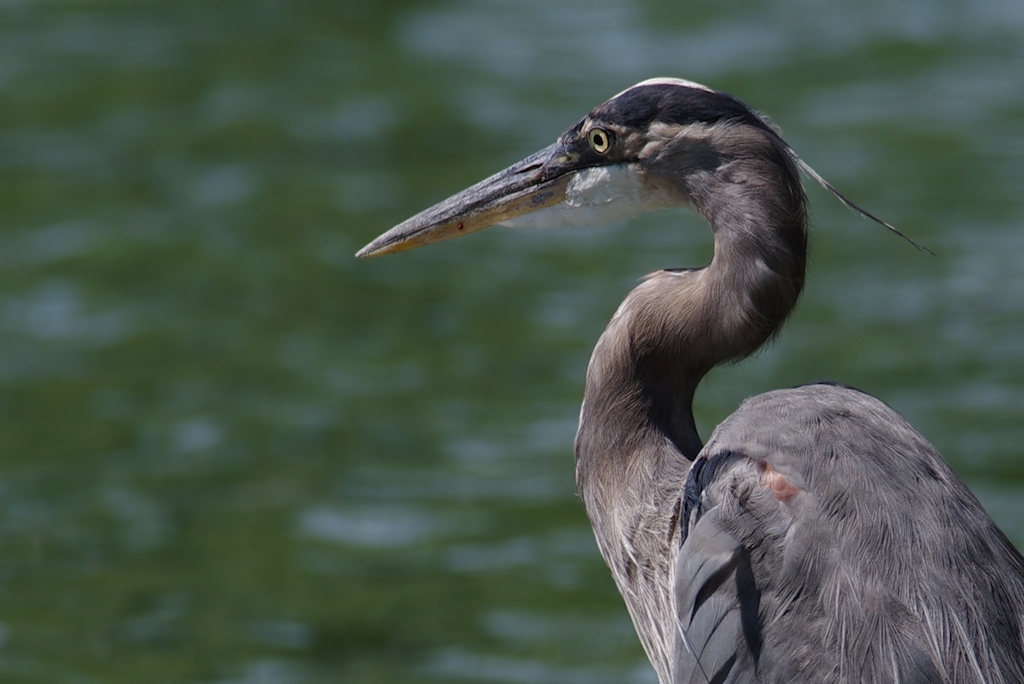
Black Crowned Night Heron. K-5, FA* 300 f4.5 + F 1.7x AFA. 1/1250, f4.5 at the lens, ISO 800 Cropped to 8x10 from the right side only

I like using the DA 55-300, as it's a very competent lens, but it's really not in the same class as the * prime ultra teles. I use mine often since it's so lightweight and the zoom capabilities are often very convenient. Here's one I really like with the DA 55-300, K-5, 1/800, f8,
ISO 5000, handheld. Cropped to 8x10 from the top only.
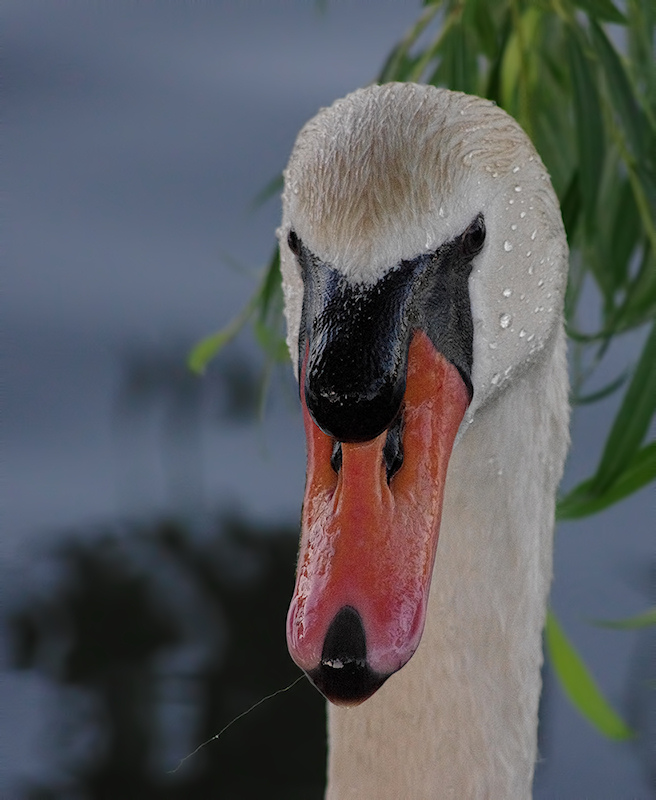
Most people graduate to one of the * primes after starting with something like the DA 55-300. I've been shooting the premium ultra teles for years, and recently added the DA 55-300 to my collection of lenses so I can take advantage of it's excellent performance from a very compact lightweight lens.
Scott


 Similar Threads
Similar Threads 





